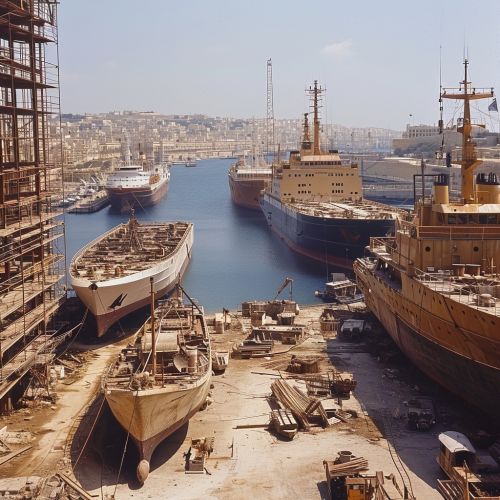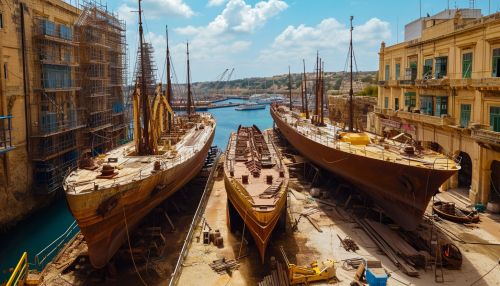Malta Shipbuilding
History
The history of shipbuilding in Malta dates back to the ancient times, with the first known shipyards established during the Phoenician era. The strategic location of the island in the Mediterranean Sea made it a crucial point for naval activities, and the shipbuilding industry evolved over the centuries, influenced by various civilizations that ruled Malta.


Medieval Period
During the medieval period, the shipbuilding industry in Malta was primarily focused on the construction of galleys for the Knights Hospitaller, also known as the Knights of Malta. The knights established the Royal Malta Yacht Club and the Malta Drydocks, which became the center of shipbuilding activities on the island.
British Rule
The British rule (1800-1964) marked a significant period in the history of Malta's shipbuilding industry. The British expanded the existing shipyards and established new ones, transforming Malta into a major shipbuilding and repair hub in the Mediterranean region. The Royal Navy Dockyard was one of the most significant establishments during this period.
Post-Independence Era
After gaining independence in 1964, the Maltese government took over the shipyards and established the Malta Shipbuilding Company. The company focused on building cargo ships, oil tankers, and passenger ferries. However, the industry faced several challenges, including competition from other countries and financial difficulties.
Present Day
Today, the shipbuilding industry in Malta is primarily focused on ship repair and maintenance services. The Malta Drydocks and the Palumbo Malta Shipyards are among the leading ship repair facilities in the Mediterranean region. The industry also contributes to the Maltese economy by providing employment opportunities and contributing to the country's GDP.
Shipbuilding Process
The shipbuilding process in Malta involves several stages, including design, construction, outfitting, and testing. The process begins with the design phase, where naval architects create detailed plans for the ship. The construction phase involves the assembly of the ship's hull, followed by the installation of engines and other machinery during the outfitting stage. The final stage is the testing and delivery of the ship.
Challenges and Future Prospects
The Maltese shipbuilding industry faces several challenges, including competition from other countries, high operating costs, and the need for technological advancements. Despite these challenges, the industry has potential for growth, particularly in the areas of ship repair and maintenance, yacht building, and the construction of specialized vessels such as offshore support vessels and patrol boats.
